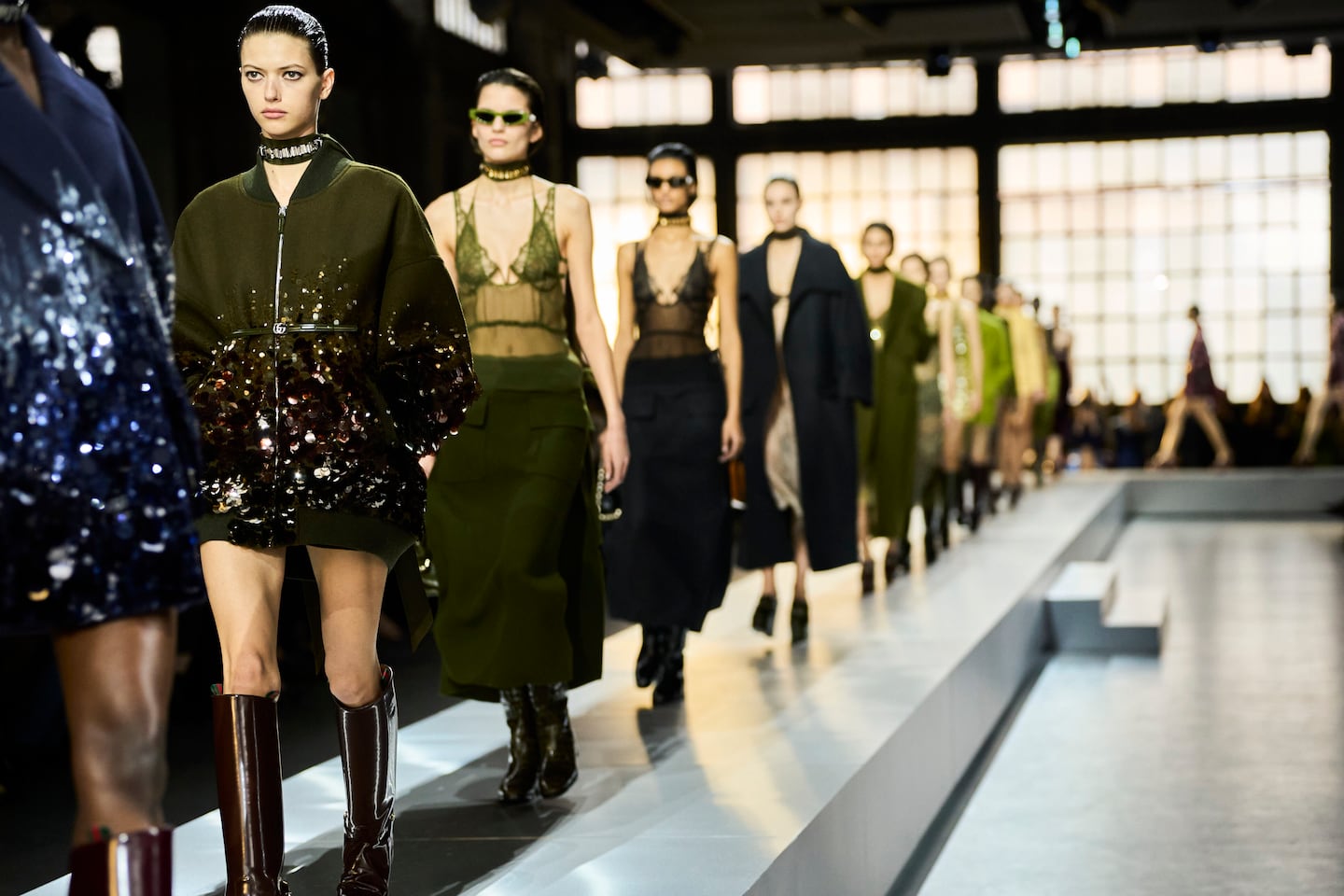
The Business of Fashion
Agenda-setting intelligence, analysis and advice for the global fashion community.

Agenda-setting intelligence, analysis and advice for the global fashion community.

Kering’s first-quarter revenues will likely decline by 10 percent on a comparable basis, the Paris-based luxury group flagged in an unscheduled trading update Tuesday.
The company cited slow sales at Gucci, which accounts for more than half of Kering’s revenues, as the principal driver of the drop. Gucci’s comparable revenues are likely to fall by 20 percent year-on-year, Kering said, noting particularly poor performance in the key Asia-Pacific region.
Gucci faced pressure to shake up its fashion image and commercial strategy after a historic boom piloted by designer Alessandro Michele and CEO Marco Bizzarri came back to earth and was followed by years of anaemic growth.
But sales have continued to slide under a revamped team including creative director Sabato De Sarno and CEO Jean-François Palus (Kering chairman François-Henri Pinault’s longtime deputy CEO at the group level).
ADVERTISEMENT
The first collections by De Sarno did not arrive in stores mid-February, Kering flagged. The new collection, whose availability will gradually be ramped up over the coming months, is “meeting with highly favourable reception,” the company said.
Reported revenues for the group will fall by 1 to 2 percent as the company consolidates the sales of perfume brand Creed for the first time, helping to offset Gucci’s decline. Other brands in the portfolio should be roughly flat, analysts inferred.
Kering has taken a harder hit than most listed rivals as soaring demand for luxury in the wake of the pandemic slowed sharply in recent months. At Gucci, consumer interest in the quirky, maximalist vision put in place by De Sarno’s predecessor had been wearing thin for years, while an over-dependence on aspirational customers made it harder for the group’s second-biggest brand, Saint Laurent, to keep posting record growth.
Meanwhile, Bottega Veneta has sought to reduce its wholesale exposure, depressing sales, and the continued after-shocks of a public relations meltdown at Balenciaga have made it harder for the brand to sustain interest in its chunky sneakers and logo hoodies.
Still, news that the group’s decline has worsened will likely shake markets: the forecast 10 percent drop in Q1 follows a 4 percent decline in the holiday quarter.
Kering may not be the only company to report worse-than-expected results this quarter: US credit card purchases on luxury items fell 15 percent year-on-year in February, following a 19 percent drop in January, according to Citi. Sales in the key Chinese market have also continued to bounce back more slowly than hoped.
“The bad news on Kering are company specific, but are also a good reminder that consumer confidence and discretionary spend in China is soft,” Bernstein analyst Luca Solca said.
A handful of top-end competitors like Hermès, Loewe, Loro Piana, Brunello Cucinelli and Zegna have continued to see customer interest surge in recent quarters. But efforts by more-accessible luxury brands to reposition themselves to capture demand from the wealthiest consumers could backfire: higher prices risk further putting off entry-level customers, while top spenders are hard to recruit.
ADVERTISEMENT
“Most luxury companies have highlighted demand weakness in entry-level categories usually targeting aspirational consumers, with sharp multi-year price increases posing a risk to future volume growth,” Citi analyst Thomas Chauvet said in a note Tuesday.
The 20 percent decline in sales at Gucci, Kering’s biggest and most profitable brand, is a worrying sign for markets. Analysts were expecting a 4 percent drop in the first quarter, according to Visible Alpha’s consensus.
De Sarno’s less extravagant, more relatable Gucci has won only limited accolades from fashion insiders. That it has yet to reinvigorate sales will only make it harder to shore up support for the new direction. But operational hold-ups are also to blame.
New product represents only about 5 percent of total Gucci goods in stores today, and should scale to 30 percent by June, RBC Capital Market analyst Richard Chamberlain estimates.
“We believe more is needed to assess customer reaction,” Chamberlain wrote in a note to clients. “By mid-year, Gucci will have 30 percent (or all of its seasonal product) in the new Sabato De Sarno design aesthetic, at which point we would hope to see better visibility (advertising, marketing, celebrity and influencer uptake, etc.) and early signs of uptake with the broader customer base.”
The designer has always been an arch perfectionist, a quality that has been central to his success but which clashes with the demands on creative directors today, writes Imran Amed.
This week, Prada and Miu Miu reported strong sales as LVMH slowed and Kering retreated sharply. In fashion’s so-called “quiet luxury” moment, consumers may care less about whether products have logos and more about what those logos stand for.
The luxury goods maker is seeking pricing harmonisation across the globe, and adjusts prices in different markets to ensure that the company is”fair to all [its] clients everywhere,” CEO Leena Nair said.
Hermes saw Chinese buyers snap up its luxury products as the Kelly bag maker showed its resilience amid a broader slowdown in demand for the sector.